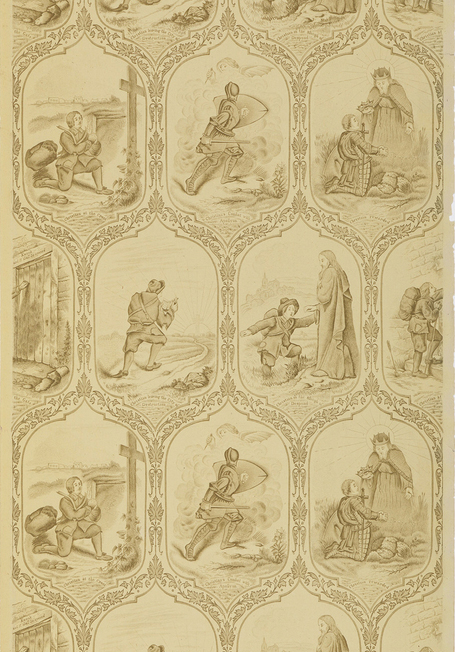One of the influences on design and technology in the nineteenth century was new information on health and hygiene. It was discovered early in the century that germs cause disease, and there were a number of cholera outbreaks beginning early in the nineteenth century which lasted through most of the century. Wallpaper had always been printed with water-soluble pigments which meant it couldn’t be cleaned. This caused health professionals to advise against its use believing it harbored germs. Manufacturers began looking for ways to make wallpaper washable in the 1820s but didn’t have much success until the 1870s.
Pilgrim’s Progress is one of the earliest washable wallpapers. It is an intaglio print, meaning it was machine-printed with oil pigment using engraved copper rollers. This created a smooth surface that could be wiped clean, and was the only type of printing that could create a shaded effect which meant the design could be printed with fewer rollers. Intaglio papers continued to be printed until about 1934 when the first scrubbable papers as we know them today were developed.
Based on the seventeenth century story by John Bunyan, Pilgrim’s Progress is a religious allegory centering on the journey of Christian as he travels from this world to the next and the paper illustrates some of the different adventures he encounters along the way. The story is a little severe, which is reinforced by the rather somber palette. While this paper could be used in any room where a family wished to express their faith, it would also have been an appropriate paper for a children’s nursery.
